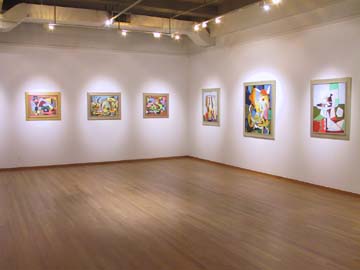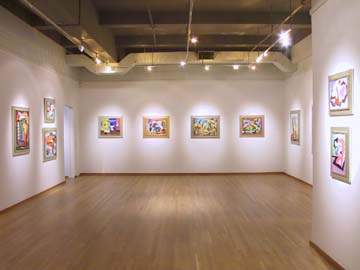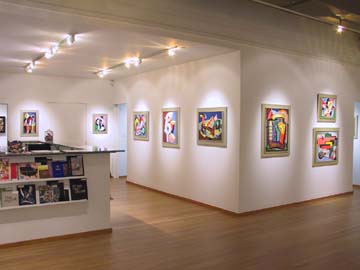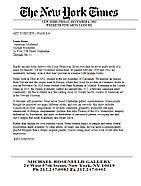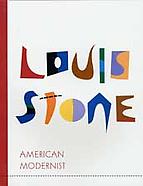Michael Rosenfeld Gallery, known for reevaluating twentieth-century American art, is pleased to present its first solo exhibition featuring the avant-garde abstract paintings of Louis Stone (American, 1902-1984). This exhibition, the artist’s first one-man presentation in New York City since 1939, includes twenty-five major oil paintings dating from 1938 to 1942. Created during a critical moment in the rise of American abstraction, Stone’s paintings are distinctive in their vibrant hues and dynamic compositions. The paintings reflect his studies in the 1920s with Hans Hofmann in Germany and Andre L’hote in France, and his lifelong interest in jazz. This exhibition is a rare opportunity to view a selection of Stone’s finest paintings, many of which are being exhibited for the first time.
Louis Stone was born in Findlay, Ohio and received formal art training at the Art Academy of Cincinnati (1923), the Pennsylvania Academy of Fine Arts summer sessions (1926), and the Art Students League in New York City (1926-27). While painting in Gloucester, Massachusetts during the summer of 1927, Stone met artist Carolyn Hoag, whom he married later that fall. Following their marriage, the Stones lived in Europe for five years, spending most of their time in Southern France. While abroad, Stone studied with Hans Hofmann at the Hofmann School of Fine Arts in Munich, the Academie Colorossi in Paris, and with André L’hote at the artist’s summer school in Mirmande, France. He also lived and painted in Paul Cézanne’s former home/studio in Aix-en-Provence. Stone’s studies in Europe laid the foundation for his early non-objective work. Stone returned to the United States in 1933 and lived for a brief period in Woodstock, New York before traveling to Florida where he co-founded the Stone-Morris School of Fine Arts in Jacksonville. In 1935, he settled in Lambertville, New Jersey, a town near New Hope, Pennsylvania that was home to an artistic and intellectual community, which included a group of modernist artists called the Independents. Like other organizations of American artists during this
November 7, 2002 – January 11, 2003
Artists
Press
Publications
Press Release
period (such as the American Abstract Artists and the Transcendental Painting Group), the Independents were struggling to gain recognition in a culture that was not particularly receptive to abstract art. Stone was a leading member of the Independents, exhibiting regularly and working with group members Charles Evans and C.F. Ramsey to establish the Cooperative Painting Project. Although Stone frequently collaborated and exchanged ideas with other members of the Independents, his work from the mid-1930s and 1940s retains a distinctive style that demonstrates a mastery of the modernist lessons he learned in Europe, while asserting an innovative use of flat color to suggest three dimensional space. Stone once remarked that he wanted “to keep his colors alive,” and consequently, his work contains visually complex color harmonies that demonstrate his willingness to break the stylistic conventions of the School of Paris in favor of a more idiosyncratic palette. In addition to his association with the Independents, Stone exhibited in the New York Worlds Fair in New York City (1939), as well as in museums and galleries throughout New Jersey, Pennsylvania and New York. He also worked for the New Jersey WPA (1935-37), designing murals for various public buildings throughout the United States. Stone continued to paint and travel extensively with his family throughout North America until his death in 1984 at the age of 82.
Michael Rosenfeld Gallery is the exclusive representative of the Estate of Louis Stone. To learn more about Louis Stone, please visit the Artists & Estates section of our website.

